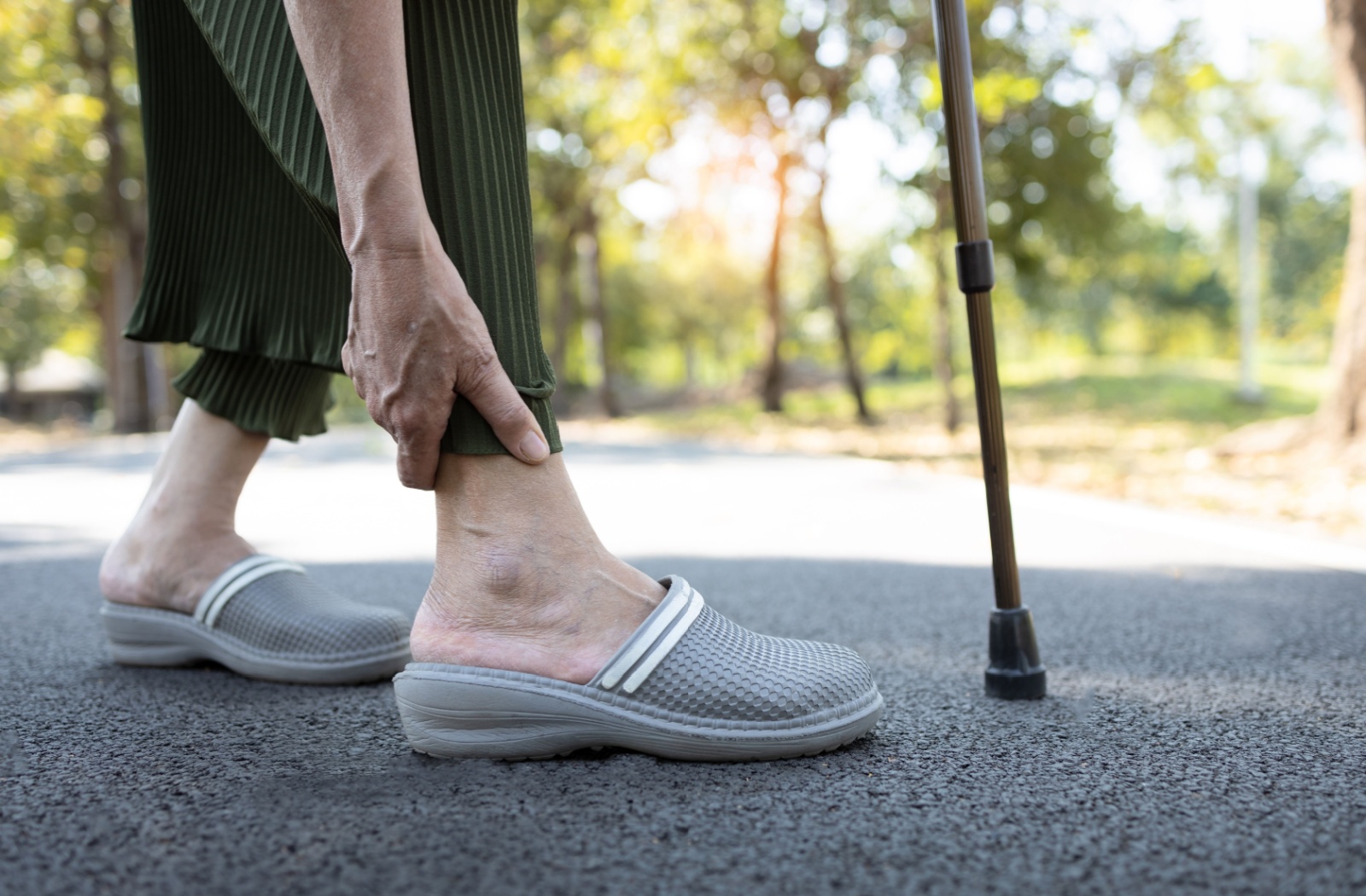A healthy, active lifestyle—that’s a valuable thing. For many older adults, staying active is the key to maintaining independence with age. However, aging can add unique obstacles to fitness, like swollen ankles, making daily activity challenging.
Swollen ankles in seniors are often caused by poor circulation, fluid retention, or underlying medical conditions. Arthritis, kidney disease, and heart issues are all common causes. However, sometimes swollen ankles indicate something serious, so learning to recognize when something is seriously wrong is crucial.
Common Causes of Swollen Ankles in Seniors
Swollen ankles can develop due to various reasons. Sometimes, this is due to natural changes in the body, but other times, it’s a little more complex.
One frequent cause is poor circulation. Our blood vessels become less elastic as we age, making it harder for blood to flow efficiently. Inadequate blood flow often leads to swelling in the feet and ankles.
Fluid retention is another common culprit. Known as edema, this can occur due to prolonged sitting, standing, or exposure to heat.
Certain medical conditions, including arthritis, diabetes, or kidney disease, can also lead to swollen ankles. Even some medications can lead to swelling throughout the body.
If you’re dealing with swollen ankles, visiting a healthcare professional to learn what’s causing your symptoms is essential. Identifying the cause is the first step toward reducing your discomfort.
When to Worry About Swollen Ankles
While occasional swelling can be a normal part of aging, some signs indicate something more serious. If you ever notice significant pain or discomfort, don’t ignore it—these are signs of an underlying condition.
Some signs of serious problems include:
- Swelling accompanied by redness, warmth, or fever can indicate an infection
- Sudden swelling in one leg is potentially a sign of deep vein thrombosis (blood clot)
- Swelling that doesn’t improve can suggest kidney, liver, or heart problems
- Severe pain or inability to walk warrants immediate medical attention
- Swelling that develops after an injury can indicate a sprain or fracture
If you ever notice symptoms like breathing problems, significant pain, or temperature changes, visit a healthcare professional as soon as possible.
Tips for Reducing Swollen Ankles
Swollen ankles don’t have to slow you down. When your ankles swell due to lifestyle or everyday habits, you can make small adjustments to reduce the swelling.
These strategies can offer long-lasting benefits and help you maintain a healthier, more active, and more independent lifestyle.
Maintain a Healthy Weight
Weight can add stress on your joints. Everyday tasks are more difficult, and excess weight can lead to persistent strain on the ankles.
Being overweight can also lead to increased:
- Fluid retention, which can cause swelling
- Pressure on blood vessels, causing restricted circulation
- Risk of developing conditions such as arthritis
- Fatigue related to metabolic changes & sleep issues
- Risk of falls & injuries due to difficulty maintaining balance
These can all affect your overall quality of life. You can calculate your BMI to help determine a guideline for your healthy weight. While BMI is limited because it doesn’t consider personal factors, it’s a tool that can work as a starting point to help you understand your overall health.
Follow a Balanced Diet
A low-sodium, anti-inflammatory diet helps minimize fluid retention. It helps to make some small lifestyle adjustments to maintain a healthier diet. You can support a balanced diet by:
- Adding more fresh fruits & vegetables to your meals
- Choosing whole grains over refined grains for nutrition & fiber
- Opting for lean proteins like fish, chicken, or plant-based options
- Reducing your intake of processed & high-sodium foods
- Limiting added sugars & avoiding sugary beverages
Remember to stay well-hydrated! Your water intake can help support essential bodily functions and weight management.

Use Supportive Footwear
Wearing comfortable, well-fitted shoes designed for swollen ankles can support your feet and ankles. These shoes help you in your everyday activities and make navigating the world safer and more comfortable.
Look for shoes with:
- Proper arch support
- Cushioning for shock absorption
- A snug, but not tight, fit
- Breathable materials for comfort
- Durable soles with good traction
These features can make a significant difference in keeping you supported every day.
Exercise Regularly
Gentle exercises can make all the difference. Swollen ankles don’t mean you can’t exercise anymore—instead, you’ll need to make some small changes.
Some popular exercises for seniors with swollen ankles include:
- Seated marches
- Ankle rotations
- Toe or heel raises
- Swimming or water aerobics
- Light stretching exercises
- Swimming & water aerobics
Even short stretches can promote circulation and lower the chance of swelling.
Let Our Team Support You
A healthier lifestyle is within reach, and it all starts with small changes. You deserve to feel supported in your everyday life as you work towards a healthier lifestyle—and that’s where our Bay Lake community can help.
In our community, we’re proud to support residents every day. Here, you’ll always have access to what you need to thrive. Schedule a visit with our team today, and take your first step towards living the lifestyle you’ve earned and deserved.













